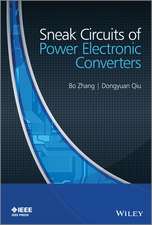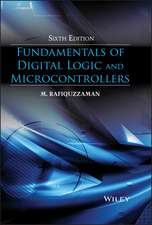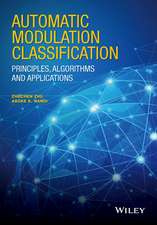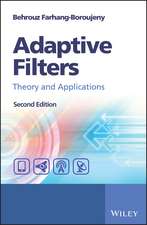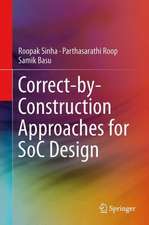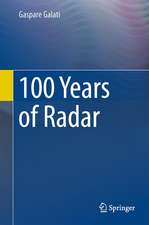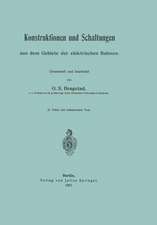Optimal Production Planning for PCB Assembly: Springer Series in Advanced Manufacturing
Autor William Ho, Ping Jien Limba Engleză Hardback – 6 oct 2006
This is the first book to focus on the optimization of the PCB assembly lines’ efficiency. It integrates the component sequencing and the feeder arrangement problems together for the pick-and-place machine and the chip shooter machines; constructs mathematical models and develops an effective heuristic solution approach for the integrated problems of placement machines, the line assignment problem, and the component allocation problem; and develops a prototype of the PCB assembly planning system.
The techniques proposed will enable process planners in the electronics industry to improve their assembly line’s efficiency. Graduate students in operations research can use this to familiarise themselves with the techniques and applications of mathematical modeling.
| Toate formatele și edițiile | Preț | Express |
|---|---|---|
| Paperback (1) | 632.37 lei 6-8 săpt. | |
| SPRINGER LONDON – 28 oct 2010 | 632.37 lei 6-8 săpt. | |
| Hardback (1) | 638.43 lei 6-8 săpt. | |
| SPRINGER LONDON – 6 oct 2006 | 638.43 lei 6-8 săpt. |
Din seria Springer Series in Advanced Manufacturing
- 18%
 Preț: 1124.92 lei
Preț: 1124.92 lei - 18%
 Preț: 952.89 lei
Preț: 952.89 lei - 18%
 Preț: 1122.56 lei
Preț: 1122.56 lei - 17%
 Preț: 463.35 lei
Preț: 463.35 lei - 18%
 Preț: 1231.95 lei
Preț: 1231.95 lei - 15%
 Preț: 671.14 lei
Preț: 671.14 lei - 20%
 Preț: 691.51 lei
Preț: 691.51 lei - 18%
 Preț: 956.81 lei
Preț: 956.81 lei - 15%
 Preț: 632.37 lei
Preț: 632.37 lei - 20%
 Preț: 655.85 lei
Preț: 655.85 lei - 15%
 Preț: 636.94 lei
Preț: 636.94 lei - 18%
 Preț: 949.06 lei
Preț: 949.06 lei - 18%
 Preț: 1830.17 lei
Preț: 1830.17 lei - 19%
 Preț: 562.16 lei
Preț: 562.16 lei - 18%
 Preț: 1821.63 lei
Preț: 1821.63 lei - 18%
 Preț: 945.79 lei
Preț: 945.79 lei - 18%
 Preț: 949.10 lei
Preț: 949.10 lei - 18%
 Preț: 1552.01 lei
Preț: 1552.01 lei - 18%
 Preț: 1383.81 lei
Preț: 1383.81 lei - 18%
 Preț: 958.38 lei
Preț: 958.38 lei - 15%
 Preț: 639.25 lei
Preț: 639.25 lei - 18%
 Preț: 952.72 lei
Preț: 952.72 lei - 18%
 Preț: 945.79 lei
Preț: 945.79 lei - 15%
 Preț: 647.27 lei
Preț: 647.27 lei - 18%
 Preț: 945.92 lei
Preț: 945.92 lei - 18%
 Preț: 1215.99 lei
Preț: 1215.99 lei - 18%
 Preț: 1226.73 lei
Preț: 1226.73 lei - 18%
 Preț: 1840.43 lei
Preț: 1840.43 lei - 18%
 Preț: 1225.13 lei
Preț: 1225.13 lei - 18%
 Preț: 952.72 lei
Preț: 952.72 lei - 15%
 Preț: 634.68 lei
Preț: 634.68 lei - 15%
 Preț: 641.53 lei
Preț: 641.53 lei - 18%
 Preț: 947.35 lei
Preț: 947.35 lei - 18%
 Preț: 954.45 lei
Preț: 954.45 lei - 18%
 Preț: 951.77 lei
Preț: 951.77 lei - 15%
 Preț: 634.68 lei
Preț: 634.68 lei - 15%
 Preț: 636.94 lei
Preț: 636.94 lei - 18%
 Preț: 945.14 lei
Preț: 945.14 lei - 15%
 Preț: 638.89 lei
Preț: 638.89 lei - 18%
 Preț: 958.73 lei
Preț: 958.73 lei - 18%
 Preț: 1104.88 lei
Preț: 1104.88 lei - 18%
 Preț: 1226.73 lei
Preț: 1226.73 lei
Preț: 638.43 lei
Preț vechi: 751.10 lei
-15% Nou
Puncte Express: 958
Preț estimativ în valută:
122.16€ • 128.01$ • 100.99£
122.16€ • 128.01$ • 100.99£
Carte tipărită la comandă
Livrare economică 12-26 aprilie
Preluare comenzi: 021 569.72.76
Specificații
ISBN-13: 9781846284991
ISBN-10: 1846284996
Pagini: 132
Ilustrații: IX, 121 p.
Dimensiuni: 155 x 235 x 13 mm
Greutate: 0.36 kg
Ediția:2007
Editura: SPRINGER LONDON
Colecția Springer
Seria Springer Series in Advanced Manufacturing
Locul publicării:London, United Kingdom
ISBN-10: 1846284996
Pagini: 132
Ilustrații: IX, 121 p.
Dimensiuni: 155 x 235 x 13 mm
Greutate: 0.36 kg
Ediția:2007
Editura: SPRINGER LONDON
Colecția Springer
Seria Springer Series in Advanced Manufacturing
Locul publicării:London, United Kingdom
Public țintă
ResearchCuprins
Optimization Techniques.- The Sequential Pick-and-Place (PAP) Machine.- The Concurrent Chip Shooter (CS) Machine.- The Line Assignment and the Component Allocation Problems.- A Prototype of the Printed Circuit Board Assembly Planning System (PCBAPS).
Notă biografică
William Ho is a Lecturer in the Operations & Information Management Group at the Aston Business School, Aston University, UK. In 2004, he obtained his Ph.D. from the Department of Industrial and Systems Engineering at the Hong Kong Polytechnic University, Hong Kong. His research areas include Operations Management, Operations Research, and Knowledge Management.
Dr Ji worked in Beijing University of Aeronautics and Astronautics during 1985 and 1987 as teaching staff. He has also worked at the National University of Singapore (NUS) and GINTIC Institute of Manufacturing Technology, Singapore. He joined the Department of Industrial and Systems Engineering, The Hong Kong Polytechnic University in 1996, and currently he is an Associate Professor there. His research interests are Operations Management, Operations Research, and CAD/CAM.
Dr Ji worked in Beijing University of Aeronautics and Astronautics during 1985 and 1987 as teaching staff. He has also worked at the National University of Singapore (NUS) and GINTIC Institute of Manufacturing Technology, Singapore. He joined the Department of Industrial and Systems Engineering, The Hong Kong Polytechnic University in 1996, and currently he is an Associate Professor there. His research interests are Operations Management, Operations Research, and CAD/CAM.
Textul de pe ultima copertă
It is indisputable that printed circuit boards (PCBs) play a vital role in our daily life. With the ever-increasing applications of PCBs, one of the crucial ways to increase a PCB company’s competitiveness in terms of operation efficiency is to minimize the production time so that the products can be introduced to the market sooner.
Optimal Production Planning for PCB Assembly is the first book to focus on the optimization of the PCB assembly line’s efficiency. This is done by:
The Springer Series in Advanced Manufacturing publishes the best teaching and reference material to support students, educators and practitioners in manufacturing technology and management. This international series includes advanced textbooks, research monographs, edited works and conference proceedings covering all subjects in advanced manufacturing. The series focuses on new topics of interest, new treatments of more traditional areas and coverage of theapplications of information and communication technology (ICT) in manufacturing.
Optimal Production Planning for PCB Assembly is the first book to focus on the optimization of the PCB assembly line’s efficiency. This is done by:
- integrating the component sequencing and the feeder arrangement problems together for both the pick-and-place machine and the chip shooter machine;
- constructing mathematical models and developing an efficient and effective heuristic solution approach for the integrated problems for both types of placement machines, the line assignment problem, and the component allocation problem;
- developing a prototype of the PCB assembly planning system.
The Springer Series in Advanced Manufacturing publishes the best teaching and reference material to support students, educators and practitioners in manufacturing technology and management. This international series includes advanced textbooks, research monographs, edited works and conference proceedings covering all subjects in advanced manufacturing. The series focuses on new topics of interest, new treatments of more traditional areas and coverage of theapplications of information and communication technology (ICT) in manufacturing.
Caracteristici
First book to focus on the optimization of the PCB assembly line’s efficiency Mathematical modeling techniques and heuristic solution approaches are developed to optimize some critical PCB assembly problems arising in the industry Develops a prototype of the PCB assembly planning system which provides a user with an interactive interface to PCB assembly planning Includes supplementary material: sn.pub/extras


